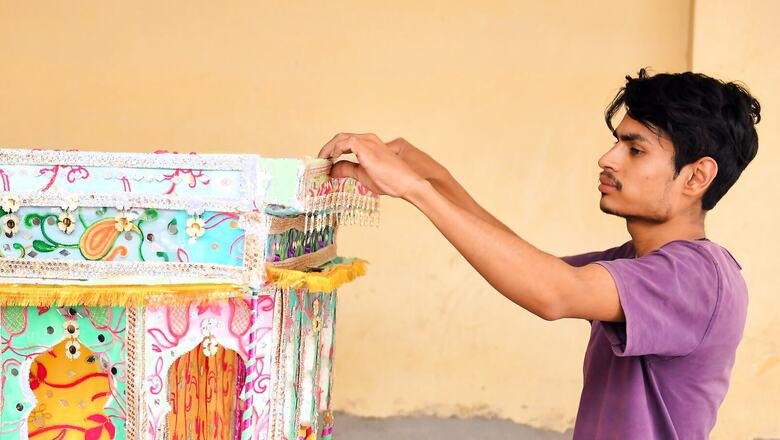
views
An important part of the Muharram celebrations of Muslims as well as non-Muslims, Tazia, made in numerous forms and types, is a replica of the mausoleum of Imam Hussain, the grandson of Prophet Muhammad. Tazia can be brought home on any day between the eve of the first day of Muharram and the ninth day and buried on the tenth day known as Ashoora, when Imam Hussain was martyred in AD 680 along with over 100 of his companions in the battle of Karbala fought against the army of Yazid, the then ruler of Syria.
Tazia or Ta’Zeieh is brought with immense care by both men and women, and children accompany them with great enthusiasm. It is placed inside the azakhana ((a private, temporary imambada), a temporary space created for Muharram, which is already aesthetically assembled with flowers and itr (perfume) and people perform matam (gentle beating of the chest and head to mourn the tragedy of Karbala) with chants of ‘Ya Hussain’. Tazia adds life to the azakhana and its arrival is a sign of commencement of mourning. All the other elements of the azakhana are permanent structures which are reused with occasional repairs and changes.
The word tazia comes from the Arabic word aza which translates to commemorating the dead; thus, taziyat means paying condolences, homage and respect to the deceased. In a sense, tazia is a symbol around which the practice of azadari (mourning rituals and cultural depiction of the tragedy of Karbala) in Muharram revolves.
Azadari symbolises respect for the martyrs of Karbala who were not buried after being killed on the battlefield, and includes majalis (a gathering of mourners with organised sermons/lectures on the tragedy of Karbala and Islam), matam (Gentle beating of the chest to mourn the tragedy of Karbala), processions, alam (a flag which is a symbol of Hazrat Abbas, Imam Hussain’s younger brother and also the commander in chief of Hussain’s army in the battle of Karbala), sabeel (a stall where tabarruk [food and water] is kept served for travellers, mourners, and visitors), fatiha (first chapter of Quran, recited for the deceased along with offerings), food distribution, prayers and various other acts of mourning.
Read all the Latest News, Breaking News and Assembly Elections Live Updates here.




















Comments
0 comment